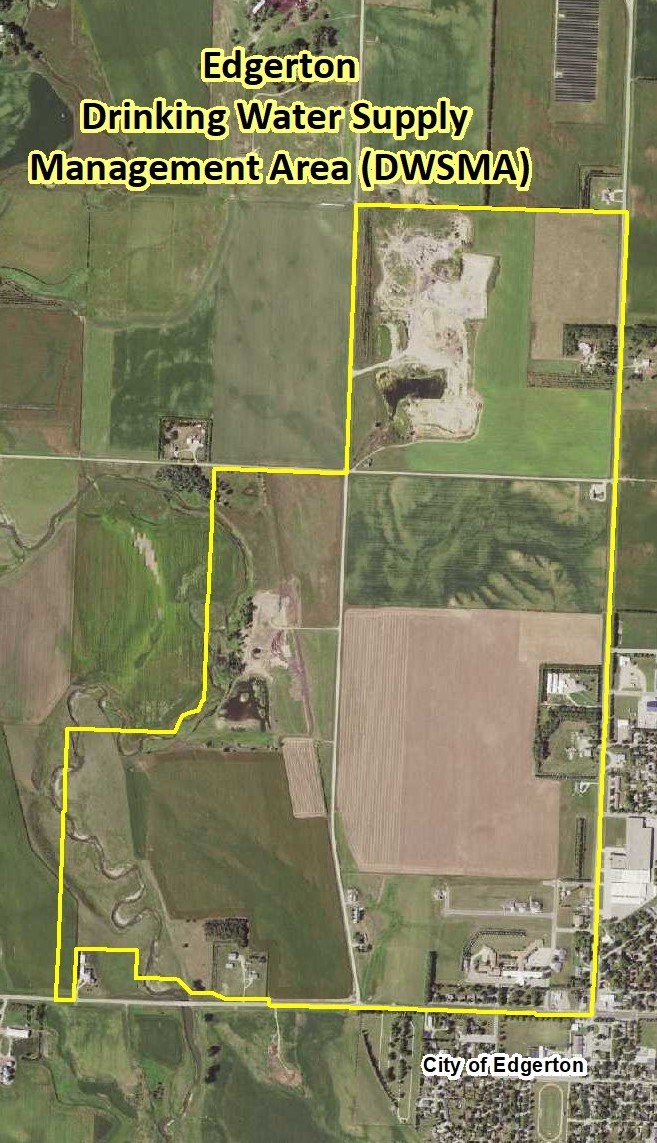A list of nitrogen best management practices (BMPs) and Alternative Management Tools (AMTs) to protect groundwater within the Edgerton Rural Water Drinking Water Supply Management Area (DWSMA) has been approved by the MDA and published in October 2024.
The list of practices was developed by the MDA in consultation with the Local Advisory Team (LAT). The BMPs that apply to your cropland will need to be adopted on at least 80% of cropland (excluding soybean acres) within the DWSMA. AMTs can be voluntarily adopted and used to replace BMPs. A summary of the information used by the MDA to develop the list is also available. Both documents can be found under "Forms + Resources".
Edgerton DWSMA Details
 Due to elevated levels of nitrate-nitrogen, the Edgerton Drinking Water Supply Management Area (DWSMA) has been listed at a Mitigation Level 2 under the Groundwater Protection Rule. To learn more about the determination process visit Mitigation Level Determination.
Due to elevated levels of nitrate-nitrogen, the Edgerton Drinking Water Supply Management Area (DWSMA) has been listed at a Mitigation Level 2 under the Groundwater Protection Rule. To learn more about the determination process visit Mitigation Level Determination.- Designated a Mitigation Level 2 on January 15, 2020 using the following criteria
- One or more public wells have exceeded 8 mg/L nitrate within the past ten years
- No point source of nitrate found to be the cause of the elevated nitrate level
(i.e., ag chemical incidents, animal feedlots, improperly sealed wells, etc.)
- The DWSMA is approximately 713 acres (medium or high vulnerability area)
- There are about ten cropland owners and operators within the DWSMA
- Located in Pipestone County
- Nitrate levels in the one primary public well have tested above 10 mg/L in the past ten years
Local Advisory Team
The MDA established a Local Advisory Team (LAT), consisting of local farmers, agronomists, local government staff, and the public water supplier.
The primary functions of the LAT are to:
- Advise the MDA on the appropriate nitrogen fertilizer best management practices (BMPs) for the project area.
- Explore opportunities to use Alternative Management Tools (AMTs) in targeted high-risk areas.
- Provide the MDA with guidance on the most effective methods to communicate with the agricultural community in the local project area.
- Support the implementation of the BMPs and AMTs at the local level.
Throughout 2023-2024, MDA staff met with the Edgerton LAT reviewing agronomic information and the MDA’s analysis of nitrogen loss below cropland within the DWSMA. Below is a list of milestones that were met during this process. The LAT will continue to meet at least once annually to review new public well nitrate data and discuss ongoing implementation of BMPs and AMTs within the DWSMA.
- Discussions with individual producers on the BMPs and AMTs appropriate within this DWSMA began in the Summer of 2021.
- The establishment of a local advisory team was delayed due to a Minnesota Department of Health update to the DWSMA boundary that was finalized in November 2022.
- A local advisory team was formed in 2023.
- The team is actively meeting
- Interviewed local ag retailers and farmers to gather information on the current nitrogen fertilizer management practices within the DWSMA
- Mapped the boundaries of cropland within this DWSMA
- University of Minnesota modeling of nitrogen loss below cropland nearby this DWSMA was used to consider the impact of nitrogen management changes within this DWMSA.
- In consultation with the LAT, a list of BMPs and AMTs that are practicable and appropriate for protecting groundwater in this DWSMA was developed and approved by the MDA.

